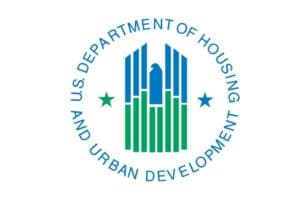Public Housing

HUD Publishes Updated RAD Inventory Assessment Tool
HUD published an updated RAD Inventory Assessment Tool. The tool is designed for PHAs that are newly considering or re-considering RAD at RAD rents based on the FY 18 Appropriation levels.

CLPHA Report: Cross-Sector Partners Collaborate to Eliminate Barriers to Postsecondary Success
A new report released from the Council of Large Public Housing Authorities (CLPHA) showcases the work of five public housing authorities (PHAs) that are successfully collaborating with postsecondary institutions and local nonprofit organizations to increase college access, retention and graduation rates for current public housing residents and college students who are experiencing homelessness.

HUD to Offer $5 Million for Carbon Monoxide Detectors in HUD Assisted Housing
HUD announced $5 million will be made available this summer for the purchase and installation of carbon monoxide (CO) detectors in public housing units where they are necessary. HUD also announced it has been working with Congressional leaders on the Senate Banking Committee on legislation that will require CO detectors in HUD-assisted housing units that need them.

HUD Issues Proposed Rule on Mixed Status Households in HUD-Assisted Housing – Comments Due July 9
HUD released a proposed rule that would prohibit mixed immigration status families from living in public and other HUD-assisted housing. The proposed rule would require the verification of the eligible immigration status of all household members and would make prorated assistance temporary until the eligibility for housing assistance has been determined.

HUD to Release RAD Revision 4 in June
HUD now expects to release the RAD revised notice (RADRev4) with modest changes to the public housing component and thorough instructions for the new RAD-for-PRAC authority in early to mid-June 2019. While waiting for RADRev4 there is plenty PHAs and their partners can do now to take advantage of recent flexibilities with RAD and other HUD preservation-redevelopment tools.

HFSC Infrastructure Hearing
On April 30 the House Financial Services Committee (HFSC) held a hearing on Housing in America: Assessing the Infrastructure Needs of America’s Housing Stock. The hearing featured discussion on Chairwoman Maxine Water’s (D-CA) draft bill, Housing Is Infrastructure Act of 2019, and testimony from:

HUD Moves to Crack Down on Undocumented Immigrants in Public Housing
HUD sent a proposed rule to Congress on April 17 that would eliminate what it says is a regulatory loophole that allows people to live in subsidized housing without having their immigration status checked.

HUD Releases FY 2019 Income Limits
HUD released the income limits for FY 2019 used to determined eligibility for public housing, Section 8, Section 202 and Section 811. HUD also released the Multifamily Tax Subsidy Program income limits for FY 2019, which are used for low-income housing tax credit and tax-exempt bond properties.

HUD FY 2019 RFIFs for HCV Renewals
HUD published the Renewal Funding Inflation Factors (RFIFs) to adjust Fiscal Year 2019 renewal funding for the Housing Choice Voucher (HCV) program of each public housing agency. HUD posted the 2019 table and 2019 data on its website.

HUD Seeks Comments on Sec. 209 Pertaining to Small PHAs – Comments Due April 15
HUD issued a notice on implementing several sections of the Economic Growth, Regulatory Relief, and Consumer Protection Act (S. 2155 of the 115th Congress) that was signed into law by President Trump on May 24, 2018. Section 209 of the bill made several amendments pertaining to small public housing agencies (PHAs) that administer 550 or fewer combined public housing units and vouchers under section 8(o) that predominantly operate in a rural area.

HUD Issues Second Invitation for Public Housing Agencies to Join MTW Demonstration Program
HUD is inviting a second round of public housing agencies to join the Department’s expanding Moving to Work (MTW) demonstration program. MTW allows public housing agencies (PHAs) to practice greater program flexibility and encourages housing choice and self-sufficiency among low-income families. Currently, there are 39 MTW PHAs throughout the nation. In 2015, Congress allowed HUD to expand the MTW demonstration program to 100 additional PHAs over a seven-year period.

Appleton, Calabria and Kurtz Nominations Advance in Senate
On Feb. 26, the Senate Committee on Banking, Housing and Urban Affairs approved the nominations of Seth Appleton to be Assistant Secretary of HUD’s Office of Policy Development and Research, Dr. Mark Calabria to be Director of the Federal Housing Finance Agency and Robert Kurtz to be Assistant Secretary of HUD’s Office of Public and […]